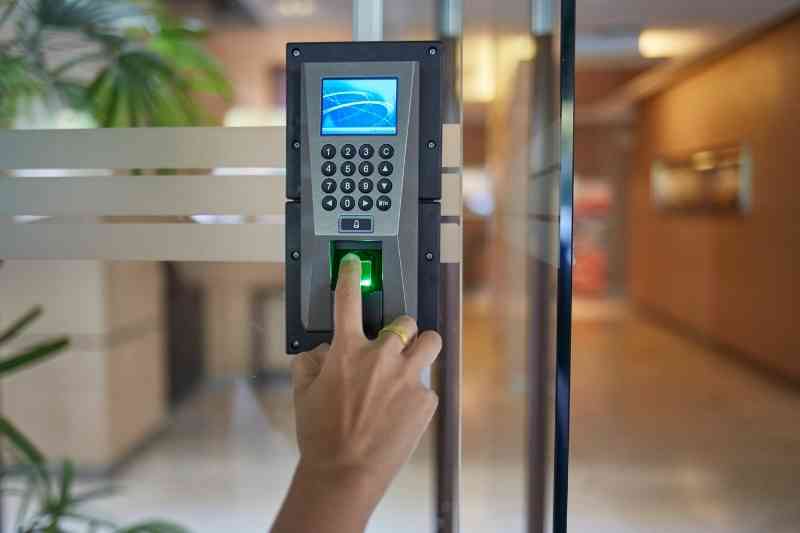The Future of Home Security is Smart
In an era where 43% of burglaries occur through unlocked doors (FBI Crime Report), smart home security systems have become essential. This comprehensive guide explores smart locks, motion sensors, and intrusion detection systems – helping you choose the best protection for your home.
Key questions we’ll answer:
- Are smart locks really more secure than traditional locks?
- How do motion sensors prevent break-ins?
- What’s the best smart security system for your home?
- Can hackers bypass these systems?
1. Smart Locks: Keyless Security Revolution
What Are Smart Locks?
Smart locks replace traditional keys with digital access methods:
- 📱 Smartphone control (via Bluetooth, Wi-Fi, or Z-Wave)
- 🔑 Temporary digital keys
- 👆 Fingerprint biometrics
- 🎙 Voice control (Alexa/Google Assistant)
Top Brands: August, Yale, Schlage, Ultraloq
✅ Smart Lock Advantages
1. Unmatched Convenience
- Never get locked out again
- Remote access for family/guests
- Auto-lock features prevent accidents
2. Enhanced Security Features
- Real-time intrusion alerts
- Activity logs (know who enters and when)
- Tamper-proof designs (pick-resistant)
3. Smart Home Integration
Works with:
- Amazon Alexa
- Google Home
- Apple HomeKit
- IFTTT automations
❌ Smart Lock Disadvantages
1. Technical Vulnerabilities
- Wi-Fi/Bluetooth hacking risks
- Power outages can cause failures
- App malfunctions
2. Physical Security Concerns
- Some models can be physically bypassed
- Installation compatibility issues
3. Cost Considerations
- 150−150−400 vs $50 traditional deadbolts
- Potential subscription fees
🔐 Best Smart Locks (Comparison Table)
| Model | Key Features | Price | Security Rating |
|---|---|---|---|
| Schlage Encode Plus | Fingerprint + Apple HomeKey | $299 | ★★★★★ |
| August Wi-Fi (4th Gen) | Auto-unlock geofencing | $229 | ★★★★☆ |
| Yale Assure Lock 2 | Touchscreen + Z-Wave | $249 | ★★★★☆ |
2. Motion Sensors: Your First Line of Defense
How Motion Detection Works
Three Main Technologies:
- PIR (Passive Infrared) – Body heat detection
- Microwave – Movement through radio waves
- Dual-Tech – Combines both for accuracy
🚨 Why Every Home Needs Motion Sensors
- Prevent break-ins before they happen
- Trigger lights/cameras to scare intruders
- Pet-friendly options available
Best Placement Strategies
- Entryways (5-7 feet high)
- Hallways leading to bedrooms
- Basement/staircase areas
Top Motion Sensor Brands
- Ring Motion Detector (Best for Ring ecosystem)
- Bosch TriTech (Lowest false alarms)
- Aqara FP1 (Presence detection)
3. Intrusion Detection Systems (Complete Protection)
How Modern IDS Works
- Entry Sensors (Doors/windows)
- Motion Detectors
- Glass Break Sensors
- Siren & Monitoring
Professional vs DIY Systems:
- ADT, Vivint (Pro installation)
- SimpliSafe, Ring (Self-install)
Smart Security Automation Examples
- “If motion detected after 11PM → Turn on lights + Record video”
- “If door forced open → Sound alarm + Notify police”
4. Security Risks & How to Mitigate Them
Common Vulnerabilities
- Wi-Fi Hacking → Use WPA3 encryption
- Jamming Attacks → Choose Z-Wave systems
- Physical Tampering → Install tamper-proof models
Pro Security Tips
✔ Always enable two-factor authentication
✔ Choose local storage for camera footage
✔ Regularly update firmware
Are Smart Locks & Motion Sensors Worth It?
✅ Yes, if:
- You want keyless convenience & remote access.
- You integrate them with a full security system.
- You invest in high-quality, encrypted models.
❌ No, if:
- You prefer low-tech, foolproof security.
- You live in an area with poor Wi-Fi/cellular signals.
- You’re on a tight budget (traditional alarms may suffice).
Final Recommendation
For optimal security, combine:
✔ A high-end smart lock (like Schlage Encode).
✔ PIR motion sensors (like Bosch TriTech).
✔ A 24/7 monitored alarm system (like SimpliSafe or ADT).
By layering these technologies, you create a smart, responsive, and intrusion-resistant home.







Leave a Reply